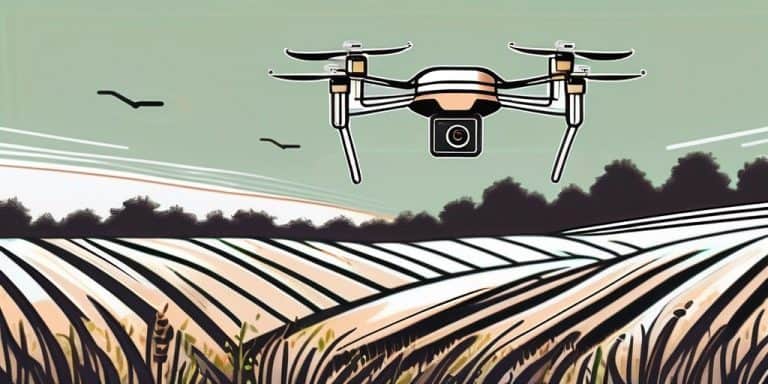
Examples of Speech Synthesis in the Legal System
Discover how speech synthesis technology is revolutionizing the legal system with real-world examples.

The road to the consumer is rocky without proper structure. Sales activities should be integrated into the different stages of the customer journey for new potential customers so they can have a smooth sale. The following article explains how a CRM system can be used to create sales cycles.
Sales cycles are divided into several phases that include smart steps to lead (i.e., to potential customers). The distribution of services can be difficult: At the beginning of the process, there will be a goal and an implementation strategy.
Marketing also focuses on targeted campaigns to raise awareness. When this win occurs, the sales funnel or sales funnel can begin. At the top, everyone is invited. Many of them fall into the net and only the real qualitative leads can become customers.
It can be tough to sell your products and services. You have to set a goal in your sales cycle, come up with a strategy, and put together a system that matches the job description (like if you’re looking for someone good at long-distance running). Plus, work with your marketing team to make a campaign that will reach lots of people during your sales cycle. Create interest in selling funnels; some comes from the top. This might lose customers along the way, but it’s still good for business overall.
The best way to identify a target lead is by using the BANT technique in your sales cycle. By qualifying leads, you’re able to separate those with potential from those without. A qualified lead is “a sales lead that has been vetted by a representative as having the potential to become a paying customer.” After you’ve determined if they are qualified, it’s time for action!
You need to give potential customers a lot of useful information if you want them to buy something from you. This is called outreach, and it can be things like an email whitepaper or invitations to free webinars. It’s especially important in business-to-business sales, because people can take months or even years to make a big purchase.
There are usually several people involved in the decision process (called a Buyers Center), so you have keep working at winning their business even after they’ve shown initial interest. This phase in the sales cycle is all about building relationships and trust.
At the beginning of a sales cycle, it can be difficult to tell if potential customers are really interested in your product or service. Sometimes it feels like you’re only getting attention from people who are just looking for a freebie. But with a littlebit of effort, you can usually find some theoretical interest that exists even before someone visits your site.
In the case of prospects who slide down the funnel, their initial interest may eventually turn into purchases. It will be a good opportunity to make an offer to sell. You should tailor this to his needs, challenges, and pain points so that the theory doesn’t change for him.
If you’re not entirely sure about an offer, or if you’re just trying to haggle, be weary. People often use the line, “It’s going to be too expensive.” This is where you should present your best argument against that cost. Tell us what benefits there are, or think of a different angle.
If the prospect is confident that your solution will work for them, then you should almost be able to sign a contract with them. Your salesperson might want to prepare all necessary documents and have those ready when meeting up so there are no last minute cold feet on either side of an agreement.
It does help if one party has already done some legwork in preparation because at this point we’re just trying our bests not only convince but also assure customers why they need what we offer above any other alternative out there. This is the end phase of the cycle where both parties feel good about what has been agreed upon, then a contract is signed and work can finally begin.
Intelligent Marketing Automation not only improves the pipeline, but also improves the performance of individual operations. Automated workflows save your staff time by eliminating repetitive processes that run automatically in the background. Automate your staffing process so they can reach ready-to-buy leads.
Businesses also get more qualified leads through liquid sales and most importantly B2B lead management with scalable, customized conditional management.
A key success factor for shorter sales cycles can be found through the knowledge of the buyer persona. Companies need to learn how to effectively reach and engage new customers.
Marketing automation can help companies find out what stage of the sales cycle leads are currently in, what stage they are interested in, and what information they are interested in – including what stage of the cycle they are in. You can track interaction by measuring how often they read newsletters and click the link to a page.
The software is designed to help you quickly find out if your lead is ready to contact a representative. If the data collected during the analysis shows that lead interactions do not exist in your mind and are not responsive to the marketing strategy, they can be automatically deleted.
For the successful sales cycle it is very important to use an effective sales management system. This requires close collaboration with marketers and effective content management systems (CMS). The organization is a good source of direct and useful information for customers to choose a product or service.
Take your customers active by using social networks, blogs and emails. Spread your material where people read it, this is to gain attention from people all over the world. Use them in their best possible way and you will quickly get closer.
The customer journey starts when you first contact a business and ends with them receiving their product or service. Along this path, there are many steps that can happen in between- some good for converting customers into buyers while other situations may result in lost revenue because of how people react to being approached by salespeople at all.
You need to constantly increase your sales tactics if you want to continue to improve your business. Here are some things that you can do in order to optimize your sales cycle.
Technology makes it possible to ask the favor from a potential visitor. As more leads accept their requests, the stronger the connection you have until the close naturally occurs in the end. Start small by asking for your phone number. During the product presentation, ask the product manager or their sales reps.
Make sure you create marketing documents for your teams. Aim to monitor team metrics. CRM software can provide reports to help your sales department track performance – response time and activity completed sales. Some people may experience difficulties during a particular phase of a customer journey. Ideally, you should provide additional support to your customers through an effective sales force.
Unfortunately, the process is quite long. Your salespeople should continue to contact and nurture prospects until they are ready to buy. The best way to do this is to create a follow-up system. You can use an email marketing tool or
Your team members can easily outsource administrative tasks so they can focus on selling. CRM systems are designed to do just that. It consolidates customer information across multiple points of contact without manual effort.
Company employees need to share them with leads to get them closer to purchase. Through a case study analysis, your company can also refute opposition. Using example books, the effectiveness of the tools can lead to more efficient and productive results.
Use this application to simplify meeting planning, streamline business processes and reduce friction in the process. The sales cycle is the process that companies use to turn prospects into customers. Eliminating planning effort can make this process more efficient and effective.
Now that you understand the basics of a sales cycle, it’s time to start putting it into practice. If you need help understanding how your business can benefit from automation or want some tips on how to better optimize your sales cycle, get in touch. We’re always happy to chat and offer our expertise so that you can close more deals and grow your business.



Discover how speech synthesis technology is revolutionizing the legal system with real-world examples.

Explore how speech synthesis technology is revolutionizing the agricultural industry with real-world examples and applications.

Explore how speech synthesis technology is revolutionizing the manufacturing industry with real-world examples.
